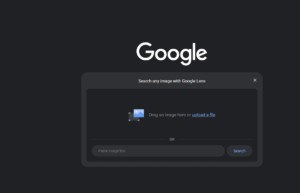Digital Footprint
In the world of private investigations, the digital realm has become an essential area of focus. Among social media platforms, Twitter (now X) provides valuable insights. For investigators, Twitter isn’t just for trending topics; it offers important details about a subject, including real-time updates and digital clues.
Twitter: A Private Investigator’s Digital Tool
Private investigators use Twitter for various objectives, including supporting legal cases, conducting background checks, and locating missing persons. Its real-time updates and search features make it particularly useful:
Real-time Intelligence: Twitter offers immediate updates on activities, trends, and movements. Investigators can use its search features to filter posts by location, keywords, and hashtags, revealing where individuals are gathering or identifying emerging situations. This helps in responding quickly to ongoing events and understanding a subject’s behavior.
Tracking Movements and Location Data: Not every tweet has geotags, but location data embedded in posts can be useful. Investigators verify a subject’s location by checking location tags on Twitter posts, especially in domestic investigations or when cross-referencing alibis. When combined with other evidence like surveillance footage, timestamps and geotags help create a clear timeline of activities. Uncovering Relationships and Networks: Interactions on Twitter, including mentions, replies, and shared content, can reveal connections between individuals. Monitoring these interactions can uncover hidden relationships or networks that are otherwise difficult to see.
Assessing Character and Verifying Alibis: For legal cases, Twitter posts help establish a person’s character or verify/disprove an alibi. Tweets may show whether someone is suitable for custody or reveal their priorities, thoughts, and intentions. Posts that contradict sworn statements or claims, such as those related to injuries or lifestyle, are particularly useful.
Identifying Aliases and Linked Profiles: A consistent username across platforms, including Twitter, can lead investigators to uncover linked accounts or additional profiles, helping to develop a more complete digital profile of a subject.
The Power of Twitter Metadata

Beyond the visible content of a tweet, a wealth of information exists within its metadata. Metadata is “data about data,” providing important context and details for an investigation.
A tweet’s metadata can include:
Content Details: The text of the tweet, links, hashtags, photos, and mentions.
Location Information: The location from which the tweet was sent, if enabled by the user.
User Profile Information: Details from the user’s profile, such as their name, latest tweet, profile photo, background, banner, and location.
Technical Details: The type of device used, the exact time it was sent, and the tweet’s unique ID (from which its URL is derived).
Photo URLs: Direct URLs of images included in the tweet.
Professionals use specialized software to analyze this metadata, along with MD5 hash values (digital fingerprints), to establish a chain of custody and ensure data authenticity. This helps in keeping evidence accurate, reliable, and court-admissible.
Using Image Search to Find Clues

Images shared on Twitter can contain significant information, and investigators often employ reverse image search techniques for further clues.
Here’s how it works:
Tracing Origins: A reverse image search can find the original source of a photo. This can reveal details such as aliases someone is using, other locations where the image has appeared, or linked profiles on different platforms.
Detecting Deception: Scammers and fraudsters often use stolen images for fake profiles. Reverse image searches can verify whether an image has been used elsewhere online, helping to expose deception.
Context Clues: Even if the image isn’t directly incriminating, its presence on various sites can provide context about a subject’s online activities and connections.
Tools like Google Images are often used for reverse image searches. When images are shared on Twitter, they include specific metadata related to their display, such as size, quality, and relevance, which can be optimized for presentation.
The Edge of Professional Investigation
While anyone can browse Twitter, a licensed private investigator uses specialized software, advanced search techniques, and a strong understanding of legal and ethical boundaries. This ensures that the information obtained is thorough and legally admissible, making Twitter a valuable tool in investigations.
Adding Why You Should Hire Hub Investigative Group
Hiring Hub Investigative Group means working with experienced professionals skilled in digital investigation techniques, including Twitter analysis, metadata extraction, and reverse image searches. Our team provides accurate, legally compliant, and detailed findings. We prioritize discretion and reliability to deliver services tailored to your needs.
Recommended Reading
Youtube to Watch


